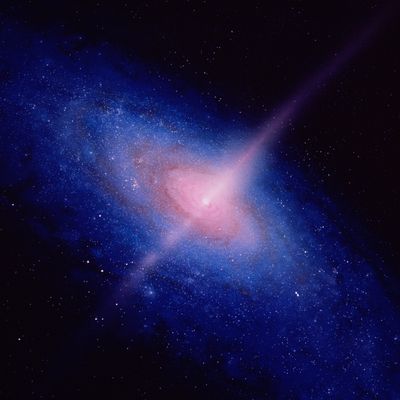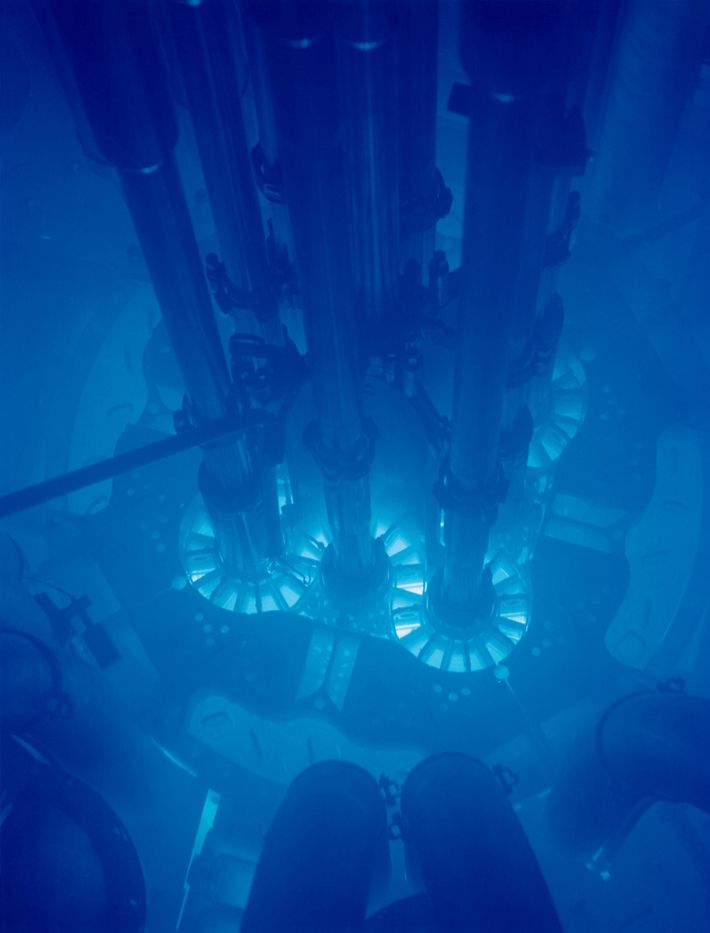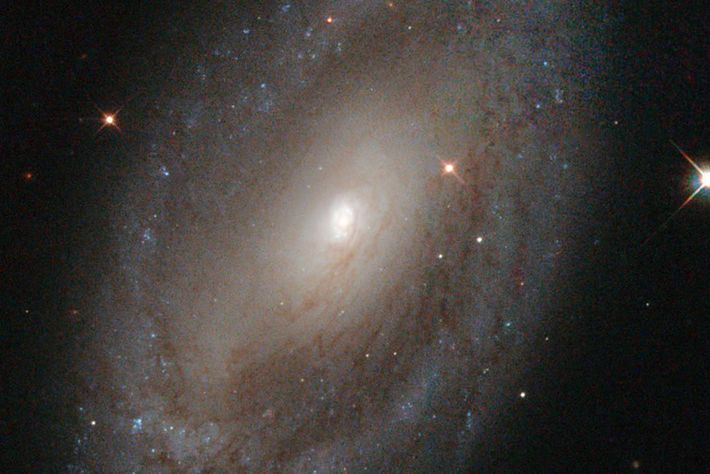
The speed of light is apparently less constant than Albert Einstein might have you assume. According to a theory advanced in a new paper, physicists are saying that at the birth of the universe, some 13.7 billion years ago, the cosmos was insanely hot, allowing light to travel at an “infinite” speed. The Imperial College London physicist who’s been developing the idea since the 1990s, João Magueijo, may soon be proven right if his prediction matches new satellite data coming in on cosmic-microwave background radiation. That would mean that in the early universe, light traveled faster than gravity, which would overturn a fundamental principle of physics.
The current understanding of the speed of light comes from Einstein and his special theory of relativity. According to that century-old insight, the fastest anything can go is 671 million miles an hour, better known as the speed of light. It’s built into “the very geometry of space and time,” says Matt Strassler, a theoretical physicist and an associate of Harvard’s physics department.
Magueijo’s theory advances a phenomenon that physicists have been tracking for the past couple decades: that light and its speed are more flexible than previously thought. Indeed, given the right conditions — some well-proven, others highly speculative — it’s possible to go faster and slower than light. As in:
Slow light down, and particles will go faster than it.
Unless you’re at the start of the universe, the speed of light — as the universal maximum — is constant. “But nothing says that light can’t go slower than the speed limit,” Kessler says.
Consider the Russian physicist Pavel Cherenkov, who first spotted superluminal stuff in 1934 when observing blue light emitted from a water bottle being bombarded with radiation, a discovery that won him the Nobel Prize in 1958. Thereafter, the effect was christened Cherenkov Radiation. This is what gives the core of nuclear reactors their eerie blue glow: Water slows down light, so charged particles like electrons buzz around faster than light does. This creates a “superluminal boom,” similar to the supersonic boom that happens when a jet breaks the sound barrier. The same thing happens when cosmic rays collide with the Earth’s atmosphere: There’s a spray of particles, and some of them get superluminal.

Physicists, clever as they are, have harnessed this as a sort of fingerprinting of superfast particles. By looking at the size and shape of the superluminal boom that’s created, you can infer lots about the particles themselves. This is precisely what the Super-Kamiokande in Japan and other high-speed particle detectors use to study neutrinos: They look at the superluminal booms created by neutrinos, much like a detective figures out what happened in a gunfight by assessing bullets and ballistics.
Nothing in the universe can go faster than the speed of light, but the universe itself can.
The universe is almost certainly expanding, perhaps infinitely — as Edwin Hubble observed back in 1925. This is why “nothing moves faster than the speed of light” needs to be qualified: That idea works for objects within space, but not space itself. As Alan Chodos, the former associate executive officer of the American Physical Society, told New York, galaxies far, far away from us can be moving faster than the speed of light, not that we’d ever know.
It’s a bit of a catch-22, he says. “If something is receding from you faster than the speed of light, then the light emitted from it is being carried along by the same expansion, and it’s trying to get to you at the speed of light, but that whole piece of space is moving away faster than the speed of light,” he says. It’s a poignant intergalactic truth: “What people call the observable universe is what’s receding slower than the speed of light.” If inflation — the idea that the universe was very tiny before getting very big — is correct, he says, then there’s a lot of existence that we’ll never see again.

Tachyons might do it, too. If they exist.
On the yet-to-be-observed side, some physicists are sure that tachyons (from the greek tachys, or swift, same as the tachometer on your dashboard) are a thing. These particles would have very weird properties, namely that they move faster than the speed of light, or so the argument goes, and as they gain energy, they slow down — so the slowest they could go would be the speed of light. “What relativity tells you is that the speed of light is a barrier on both sides,” Chodos says. Just as the particles we’re familiar with need an infinite amount of energy to meet the speed of light, the reverse would be true for tachyons. “To put the breaks on, you would have to push infinitely hard to slow it down to the speed of light,” he says.
The other hurdle for tachyons is causality. If they did exist, they would be able to go backwards through time. Not allowing you to take a trip to last week, but send messages. “A beam of tachyons, properly manipulated, could arrive at a destination at an earlier time than they were emitted to a source,” he says. “I could turn on my tachyon machine at three o’clock and you would receive it at two o’clock.” If tachyons did exist, it would lead to some Back to the Future–style paradoxes. Or maybe we just don’t know enough about the universe yet.